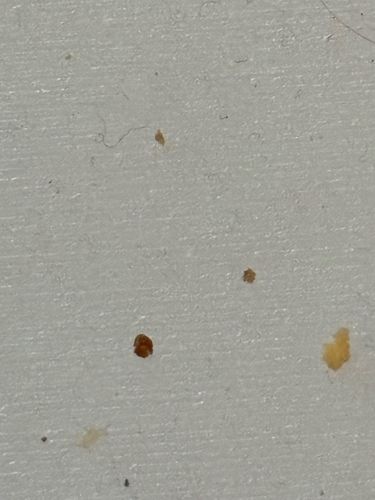Carpet Beetle
Scientific Name: There are several species, common examples include Anthrenus verbasci (Varied Carpet Beetle), Attagenus unicolor (Black Carpet Beetle), and Trogoderma variabile (Warehouse Beetle). Given the image, it is likely a larva of one of these species, possibly a Varied Carpet Beetle or Black Carpet Beetle larva based on the small, reddish-brown, somewhat oval shape, which could be a shed skin or a dead larva.
Order & Family: Order: Coleoptera, Family: Dermestidae
Size: Larvae typically range from 1 to 5 mm (0.04 to 0.2 inches) in length. Adults are usually 2 to 5 mm (0.08 to 0.2 inches).

Natural Habitat
Indoors, carpet beetles are commonly found in homes, museums, and warehouses, thriving in dark, undisturbed areas where their food sources are abundant. Outdoors, adults are found on flowering plants.
Diet & Feeding
Larvae primarily feed on animal products like wool, fur, feathers, leather, and silk, as well as dead insects. They also consume human food products like grains. Adults feed on pollen and nectar.
Behavior Patterns
Carpet beetle larvae prefer dark, undisturbed areas. They are known to move slowly. The larvae are often found in lint, cracks, or under furniture. Adults are attracted to light and feed on pollen and nectar, often found near windows.
Risks & Benefits
Risks: Carpet beetles are significant household and museum pests, causing damage to textiles, clothing, carpets, and natural fibers. They do not bite humans but can cause allergic reactions (dermatitis) in some individuals due to contact with their bristles. Benefits: In nature, they act as decomposers, breaking down organic matter.
Identified on: 8/29/2025